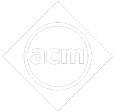- Written By
Sushmita Rout
- Last Modified 24-01-2023
Preparations of Haloarenes: Definition, Preparations, and Uses
Preparation of Haloarenes: What is the most common use of aromatic compounds in our day to day life? Aromatic compounds are commonly used as perfumes. Haloarenes are halogen derivatives of aromatic compounds in which one or more halogen atoms are bonded to the \({\text{s}}{{\text{p}}^2}\) hybridised carbon atom of the aryl group. The halogen atom in these compounds is directly attached to the benzene ring. Let’s learn some of the methods to prepare haloarenes.
Haloarenes
The general structural formula of haloarenes is \({\text{Ar-X,}}\) where \({\text{Ar}}\) represents the aryl group, and \({\text{X}}\) denotes halogen atom, which can be fluorine \(\left({\text{F}} \right),\) chlorine \(\left({{\text{Cl}}} \right),\) bromine \(\left({{\text{Br}}} \right),\) or iodine \(\left({\text{I}} \right).\) If a halogen atom replaces one hydrogen atom of benzene, then we get monosubstituted haloarene. Similarly, benzene’s hydrogen atoms can be replaced by the halogen atoms to form poly substituted haloarenes.
Classification
Haloarenes can be classified as monohaloarene, dihaloarene and trihaloarene based on the number of halogen groups attached to the benzene ring.
Monohaloarene
Haloarenes consisting of one halogen group in their molecules are known as monohaloarenes.
Based on the type of hybridisation of the carbon atom to which the halogen group is attached, Monohaloarenes can be further classified as-
(1) Compounds Containing C(sp3)-X Bond
Benzylic halides: The halogen group in these halides is attached to a \({\text{s}}{{\text{p}}^3}\), -hybridised carbon atom next to an aromatic ring. This means that the halogen atom is present in the side chain attached to an aromatic ring. Benzylic halides may be primary, secondary, and tertiary halides.
(2) Compounds Containing C(sp2)-X Bond
Aryl Halides: These monohaloarenes have a halogen group attached to a \({\text{s}}{{\text{p}}^2}\) hybridised carbon atom of an aromatic ring.
Dihaloarene
Haloarenes that have two same or different halogen groups in their molecules are called dihaloarenes. For example –
In dihaloarenes, the relative positions of the halogens \(1,2;1,3\) and \(1,4\) are indicated by the prefixes ortho \(\left({{\text{O-}}} \right),\) meta \(\left({{\text{m-}}} \right),\) and para \(\left({{\text{p-}}} \right),\) respectively.
Trihaloarene
Haloarenes that have three same or different halogen groups in their molecules are called trihaloarenes. For example-
Preparation of Haloarenes
1. From Hydrocarbons by Electrophilic Substitution
The electrophilic substitution of arenes with halogen atoms in the presence of certain reagents is known as the halogenation process.
Bromoarenes are prepared by the reaction of halogens with benzene in the presence of Lewis acids.
Chlorobenzene can be prepared by the reaction of chlorine with benzene in the presence of Aluminium trichloride.
Mechanism
Step 1: Generation of an electrophile
The chlorine dissociates and forms a bond with \({\text{FeC}}{{\text{l}}_3}\) to produce an electrophile
Step 2: The benzene attacks the electrophile, which results in the formation of an intermediate cation.
Step 3: The carbocation undergoes reaction with a base to give substituted product chlorobenzene.
Toluene reacts with halogens in the presence of Lewis acid catalysts like iron or iron(III) chloride to form ortho and para-substituted halotoluenes.
The above reaction becomes reversible if iodine is used instead of chlorine and bromine. This is because \({\text{HI}}\) produced during the course of the reaction converts aryl iodide back to the aromatic hydrocarbon.
2. From Amines by Sandmeyer’s Reaction
Primary aromatic amines, dissolved or suspended in cold aqueous mineral acid, when treated with sodium nitrite, a diazonium salt is formed—mixing the solution of the freshly prepared diazonium salt with cuprous chloride or cuprous bromide results in the replacement of the diazonium group by \( – {\text{Cl}}\) or \( – {\text{Br}}.\)
Mechanism
Step 1: Generation of nitrosonium ion
Sodium nitrite, on reacting with a cold mineral acid, gets converted to nitrosonium ion.
Step 2: The nitrosonium ion attacks the primary aromatic amine, and a new \({\text{N-N}}\) bond is formed, resulting in diazonium salt.
Step 3: Single-electron transfer takes place from copper to diazonium salt and from halide to copper(I)halide to form a neutral diazo radical and neutral copper (II) halide.
Step 4: Nitrogen gas is released by the diazo radical to form an aryl radical. The aryl radical reacts with copper (II) halide to regenerate copper (I) halide catalyst and form the final aryl halide product
Sandmeyer’s reaction for iodobenzene does not require the presence of cuprous halide. The reaction takes place simply by shaking the diazonium salt with potassium iodide.
Fluoro benzene is prepared by treating benzene diazonium chloride with fluoro boric acid. Diazonium fluoroborate is formed, which on heating produces fluorobenzene. This reaction is called Balz–Schiemann reaction.
Gattermann’s Reaction
Haloarenes (Chloro and bromoarenes) can alternatively be prepared by Gattermann’s reaction. Gattermann’s reaction is a modification of Sandmeyer’s reaction.
In Gattermann’s reaction, copper powder is used instead of cuprous halide (\({\text{CuCl}}\) or \({\text{CuBr}}\)).
Uses of Haloarenes
- Used as a precursor to many organic syntheses.
- As solvents for non-polar compounds, also known as hydrophobic compounds.
- Dichloro-Diphenyl-Trichloroethane or DDT is used as an insecticide.
- Chloroquine is used in the treatment of malaria.
- Chloramphenicol is used in the treatment of typhoid.
Summary
Haloarenes are compounds that find wide applications in industry as well as in day-to-day lives. These are used as starting materials for synthesising a wide range of organic compounds. Based on the bonding of the halogen atom to the aryl or alkyl chain, these compounds can be categorised into various classes. In this article, we learned the different methods to prepare haloarenes. We also learnt one of the important names of reaction, i.e., Sandmeyer’s reaction.
Frequently Asked Questions (FAQs) on Preparations of Haloarenes
Q.1. What are aryl halides? Give an example.
Ans: Aryl halides are aromatic compounds with a halogen atom directly bonded to the carbon atom of an aromatic ring. Some examples of aryl halides are chlorobenzene, bromobenzene, fluorobenzene etc.
Q.2. How do you prepare aryl halide by Sandmeyer’s reaction?
Ans: In the Sandmeyer reaction, a diazonium salt reacts with copper (I) chloride, copper (I) bromide, or potassium iodide to form the corresponding aryl halide. The diazonium salt is prepared from aniline by reaction with nitrous acid at cold temperatures.
Q.3. What is Gattermann reaction of preparing chlorobenzene?
Ans: Gattermann’s reaction is a modification of Sandmeyer’s reaction. In Gattermann’s reaction, copper powder is used instead of cuprous halide (\({\text{CuCl}}\) or \({\text{CuBr}}\)).
Q.4. Why can fluoro compounds not be prepared by electrophilic substitution of hydrocarbons?
Ans: Fluorine is highly reactive than its halogen members. Hence, fluoro compounds cannot be prepared by an electrophilic substitution reaction.
Q.5. What is the electrophile in Sandmeyer’s reaction?
Ans: Nitrosonium ion is the electrophile in Sandmeyer’s reaction.
Study Chemical Reactions Of Amines Here
We hope this article on the Preparation of Haloarenes has helped you. If you have any queries, drop a comment below, and we will get back to you.



























































